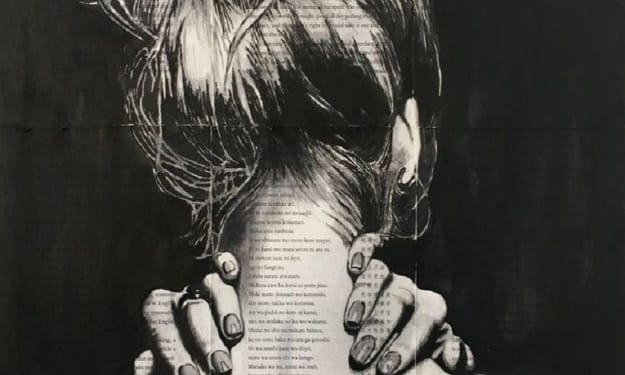The Evolution of Art through the Ages: A Historical Journey
the art evolution

Title: The Evolution of Art through the Ages: A Historical Journey
Introduction:
Art has been an integral part of human civilization, serving as a visual language that expresses emotions, conveys ideas, and preserves cultural heritage. Throughout history, art has evolved and transformed, reflecting the social, political, and technological changes of each era. This article takes you on a captivating journey through time, exploring the significant milestones and movements that have shaped the rich tapestry of art.
Ancient Art:
The roots of art can be traced back to prehistoric times when early humans created cave paintings as a means of communication and storytelling. These awe-inspiring depictions of animals and hunting scenes provide valuable insights into our ancestors' lives and beliefs. As civilizations emerged, ancient Egypt and Mesopotamia flourished as centers of artistic expression, with elaborate murals, sculptures, and hieroglyphics embodying their respective cultures.
Classical Art:
The classical period, dominated by ancient Greece and Rome, witnessed the birth of monumental sculpture and architecture. Greek sculptors sought to capture the idealized human form, showcasing beauty, harmony, and balance. The Parthenon, a sublime temple dedicated to the goddess Athena, exemplifies the architectural brilliance of this era. In Rome, magnificent frescoes and mosaics adorned public buildings, reflecting the grandeur of the empire.
Medieval and Renaissance Art:
With the rise of Christianity, medieval art became predominantly religious in nature. Illuminated manuscripts, stained glass windows, and intricate stone carvings adorned cathedrals and monasteries, serving as expressions of faith and devotion. The Renaissance marked a significant shift, bringing forth a renewed interest in humanism and a resurgence of classical influences. Artists like Leonardo da Vinci, Michelangelo, and Raphael revolutionized painting and sculpture, imbuing their works with realism, perspective, and emotional depth.
Baroque and Rococo Art:
The Baroque period, characterized by its theatricality and grandeur, emerged in the 17th century. Baroque artists such as Caravaggio and Bernini infused their works with intense emotions, dynamic compositions, and dramatic lighting. In the 18th century, Rococo art embraced a more ornate and lighthearted aesthetic, with delicate pastel colors, whimsical subjects, and intricate details. The works of Jean-Antoine Watteau and François Boucher exemplify the Rococo style.
19th and 20th Century Art:
The 19th century witnessed the birth of several groundbreaking movements that challenged traditional artistic conventions. The Romantic movement celebrated nature, emotions, and individualism, with artists like Caspar David Friedrich and J.M.W. Turner creating sublime landscapes. The Impressionists, including Claude Monet and Pierre-Auguste Renoir, rejected the rigid standards of academic art, focusing on capturing fleeting moments of light and color. The 20th century brought forth a plethora of influential movements, including Cubism (Pablo Picasso, Georges Braque), Surrealism (Salvador Dalí, René Magritte), and Abstract Expressionism (Jackson Pollock, Mark Rothko). These artists sought new forms of expression, pushing boundaries and challenging the viewer's perception of art.
Contemporary Art:
In the contemporary art world, the boundaries of art have expanded to encompass a wide range of mediums and approaches. Conceptual art, performance art, installation art, and digital art have emerged as influential forms of expression. Artists like Marina Abramović, Ai Weiwei, and Banksy continue to push the boundaries, addressing pressing social, political, and environmental issues.
Conclusion:
The evolution of art throughout history is a testament to the human spirit's boundless creativity and imagination. From the awe-inspiring cave paintings of our ancestors to the groundbreaking works of contemporary artists, art continues to shape and reflect our society. By appreciating the diverse forms and movements that have emerged over the centuries, we gain a deeper understanding of our shared humanity and the power of artistic expression. Certainly! Here is an extended version of the article:
Abstract Expressionism and Pop Art:
In the mid-20th century, Abstract Expressionism emerged as a response to the trauma of World War II. Artists like Jackson Pollock and Willem de Kooning embraced non-representational forms, emphasizing emotional expression and the power of the subconscious. Their large-scale, gestural canvases invited viewers to interpret and connect with the artwork on a visceral level. Concurrently, Pop Art challenged the notions of high art by incorporating elements of popular culture and consumerism into their works. Figures such as Andy Warhol and Roy Lichtenstein celebrated everyday objects and media imagery, blurring the line between art and mass-produced culture.
Minimalism and Conceptual Art:
As the 1960s unfolded, Minimalism gained prominence, stripping art down to its essential elements. Artists like Donald Judd and Dan Flavin focused on geometric shapes, repetition, and industrial materials, emphasizing the viewer's physical experience within the space. Simultaneously, Conceptual Art emerged as a movement that prioritized ideas over aesthetics. Artists such as Sol LeWitt and Yoko Ono explored the dematerialization of art, utilizing text, instructions, and ephemeral concepts to challenge the traditional notion of the art object.
Postmodernism and the Art Market:
Postmodernism, which emerged in the late 20th century, rejected the grand narratives and absolute truths of modernism. Artists like Cindy Sherman and Jeff Koons appropriated and subverted existing imagery, blurring the boundaries between high and low culture, originality and reproduction. The commodification of art became a significant aspect of the contemporary art world, with collectors, galleries, and art fairs exerting a profound influence on artistic production and consumption.
Digital Art and New Media:
With the advent of the digital age, artists began exploring the intersection of art and technology. Digital art, video installations, and interactive artworks became prevalent forms of expression. Artists like Nam June Paik and Bill Viola embraced new media, using video, sound, and computer-generated imagery to create immersive and thought-provoking experiences. The Internet and social media platforms have further expanded the reach and accessibility of art, enabling artists to engage with global audiences and challenge traditional modes of exhibition and distribution.
Art and Activism:
In recent years, there has been a notable rise in art's intersection with activism and social change. Artists have used their works to address pressing issues such as racial inequality, climate change, and human rights. Through installations, performances, and public interventions, artists like Ai Weiwei and JR have sparked conversations, challenged power structures, and galvanized communities. Art has become a potent tool for raising awareness, fostering dialogue, and inspiring collective action.
The Future of Art:
As we look to the future, art continues to evolve and adapt to new technologies, cultural shifts, and global challenges. Artists will likely continue to experiment with interdisciplinary approaches, merging art with science, technology, and environmental sustainability. The democratization of art through digital platforms will provide opportunities for emerging artists to reach wider audiences and foster diverse narratives. The boundaries between art forms are likely to blur even further, creating exciting possibilities for collaboration and innovation.
Conclusion:
The history of art is an ever-evolving tapestry, reflecting the aspirations, struggles, and triumphs of humanity. From ancient cave paintings to the digital realm, art has persisted as a powerful form of expression, communication, and cultural preservation. By appreciating the diverse movements and styles that have shaped the art world, we gain insight into our collective history and the potential of art to inspire, challenge, and transform our society. As we move forward, let us embrace the richness and diversity of artistic expression, celebrating its ability to connect us and ignite our imagination.
About the Creator
chatell williams
Chatell's love for art, singing, and dancing has been a driving force in her life from an early age. With a warm and captivating voice, she mesmerizes audiences whenever she takes the stage.






Comments
There are no comments for this story
Be the first to respond and start the conversation.